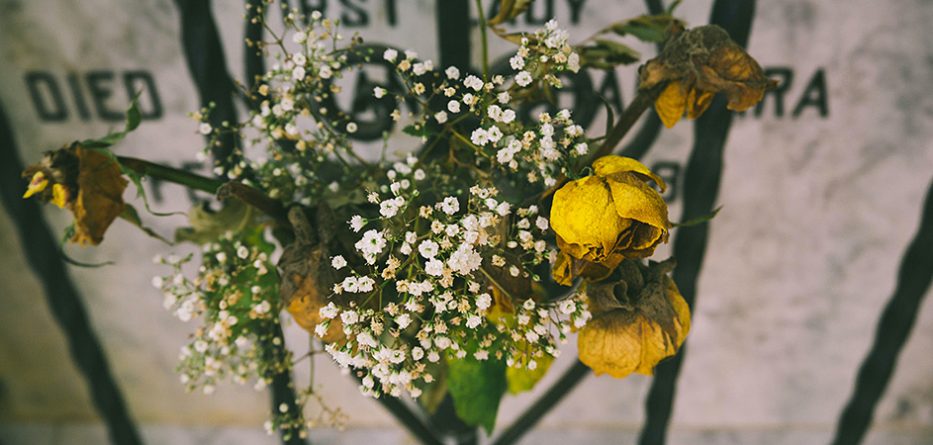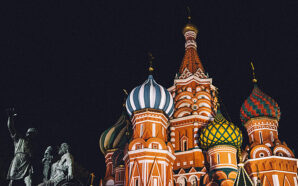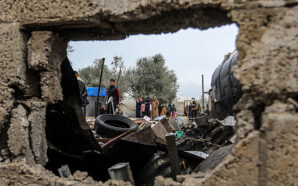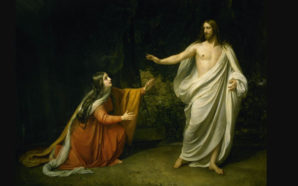In 1974, cultural anthropologist Ernest Becker won the Pulitzer Prize for his book The Denial of Death. The fear of our eventual extinction is so terrifying, so anxiety producing, Becker argued, that virtually all cultures construct elaborate schemes to deny our mortality and enable us to believe that we are immortal. In fact, Becker believed that perpetuating this denial of death constitutes one of the chief functions of culture.
But denying death is disastrous. It causes us to form illusory, false selves, and even worse, according to Becker, it foments all the horrific violence and aggression towards others that we see in the world today (since we must prove other death-denials false, and even eradicate them, else ours is exposed as a lie).
The denial of death, then, can never be our way as believers in Jesus, the Crucified and Risen One. For Christians are called to face the reality of death and hold it in creative tension with our sure hope of resurrection. The Crucified One is the Risen One!
Our faith in the Resurrection does not mean avoiding the brutal truth that death is a terrible and awesome moment. That is why we constantly ask Mary, Our Mother (in the Hail Mary), to “pray for us now and at the hour of our death”.
No wonder then the care and love we as Christians give when we lovingly ‘bury the dead’. Every person deserves the beauty and dignity of being lovingly farewelled at what one theologian has called ‘the moment of truth’.
In the Irish tradition, there is the beautiful practice of the ‘wake’ – where friends and relatives hold vigil and ‘accompany’ the deceased person before the final rites of the Church. The body is reverenced and blessed because it is a ‘seed’ being planted that will rise to new life. In the early Church the body was buried facing the east, expressing the expectation of the second coming of Christ.
Celtic poet John O’Donohue (who died suddenly in 2008 at age 52) often wrote of the mystery of how death transfigures our separation:
It is a strange and magical fact to be here, walking around in a body, to have a whole world within you and a world at your fingertips outside you. It is an immense privilege, and it is incredible that humans manage to forget the miracle of being here.
Rilke said: ‘Being here is so much.’ It is uncanny how social reality can deaden and numb us so that the mystical wonder of our lives goes totally unnoticed. We are here. We are wildly and dangerously free.
The more lonely side of being here is our separation in the world. When you live in a body you are separate from every other object and person. Many of our attempts to pray, to love, and to create are secret attempts at transfiguring that separation in order to build bridges outward so that others can reach us and we can reach them. At death, this physical separation is broken. The soul is released from its particular and exclusive location in this body. The soul then comes in to a free and fluent universe of spiritual belonging.
O’Donohue captures something of the sense of mystery and sheer awe surrounding the ‘passing over’ of the human person back into the silent heart of God.
Perhaps a sense of the mysterium tremendum is the reason the famous ancient Latin tag De mortuis nil nisi bonum – ‘Of the dead, speak nothing unless good’ – conveys a profound truth. For to ‘bury the dead’ ultimately demands of us that we ‘let God be God’. No trying to ‘play God’ in any way and judge other people after their deaths. Like it or not we are not in control. God is.
To bury the dead is, in Mary Oliver’s words, “to let it go” and to stand vulnerable, aware that “underneath are the everlasting arms” (Deut 33:27)
BLACKWATER WOODS
Look, the trees
are turning
their own bodies
into pillars
of light,
are giving off the rich
fragrance of cinnamon
and fulfilment,
the long tapers
of cattails
are bursting and floating away over
the blue shoulders
of the ponds,
and every pond,
no matter what its
name is, is
nameless now.
Every year
everything
I have ever learned
in my lifetime
leads back to this: the fires
and the black river of loss
whose other side
is salvation,
whose meaning
none of us will ever know.
To live in this world
you must be able
to do three things:
to love what is mortal;
to hold it
against your bones knowing
your own life depends on it;
and, when the time comes to let it go,
to let it go.
Mary Oliver
This article is part of a series of Lenten reflections entitled A Spirit of Mercy: Reflections on the Works of Mercy by Br Mark O’Connor FMS.
Br Mark O’Connor FMS is the Vicar for Communications in the Diocese of Parramatta.








